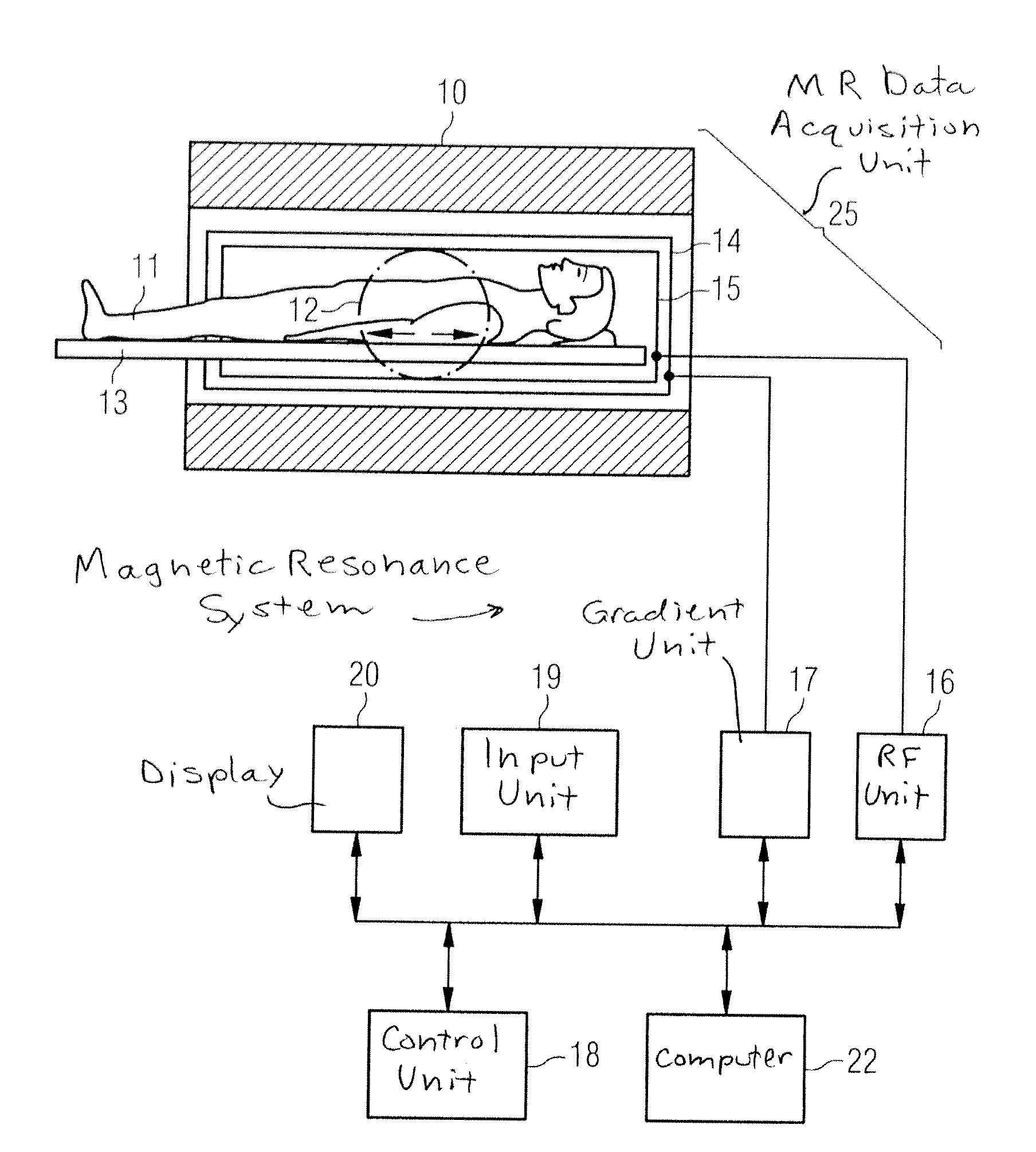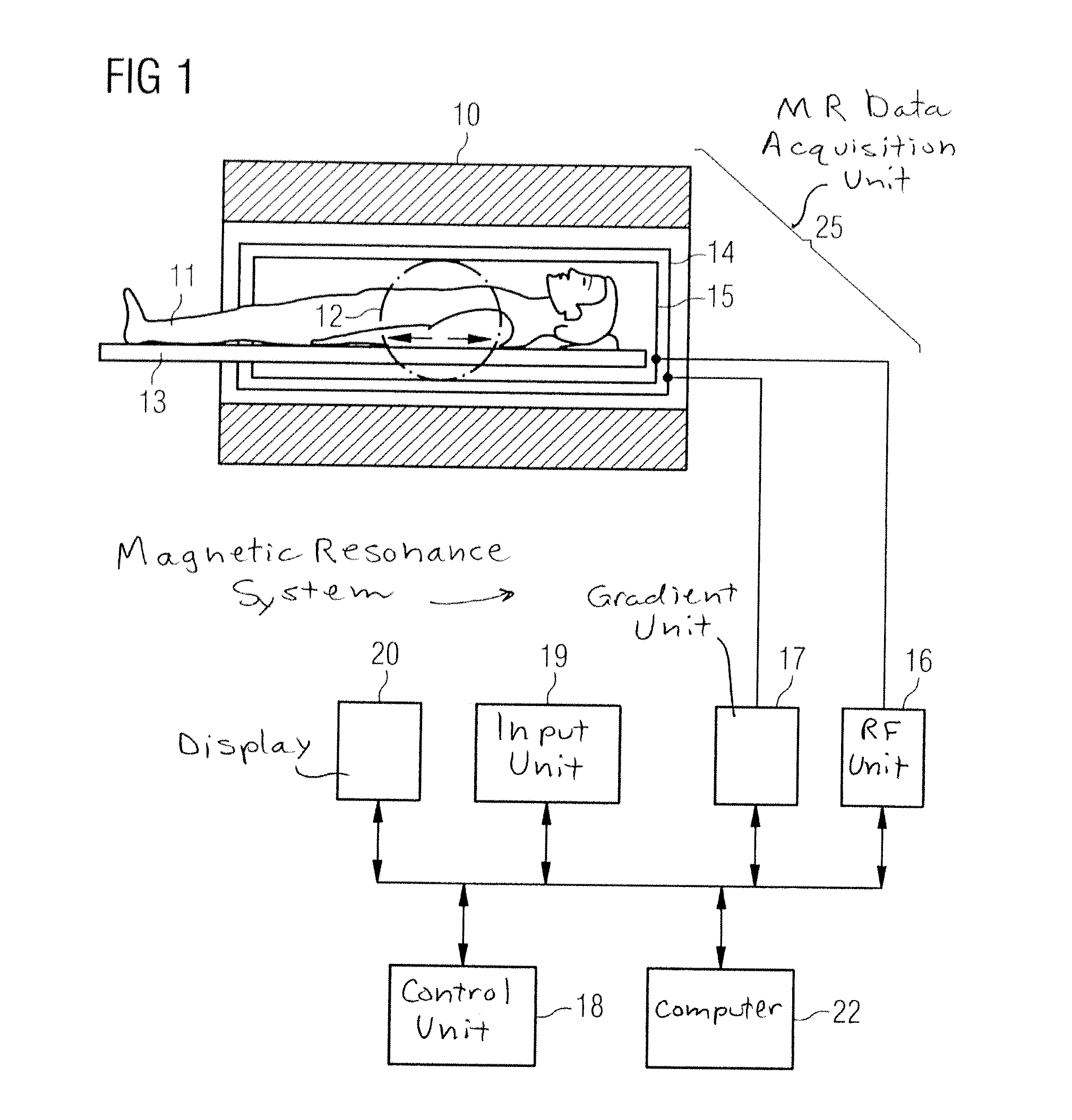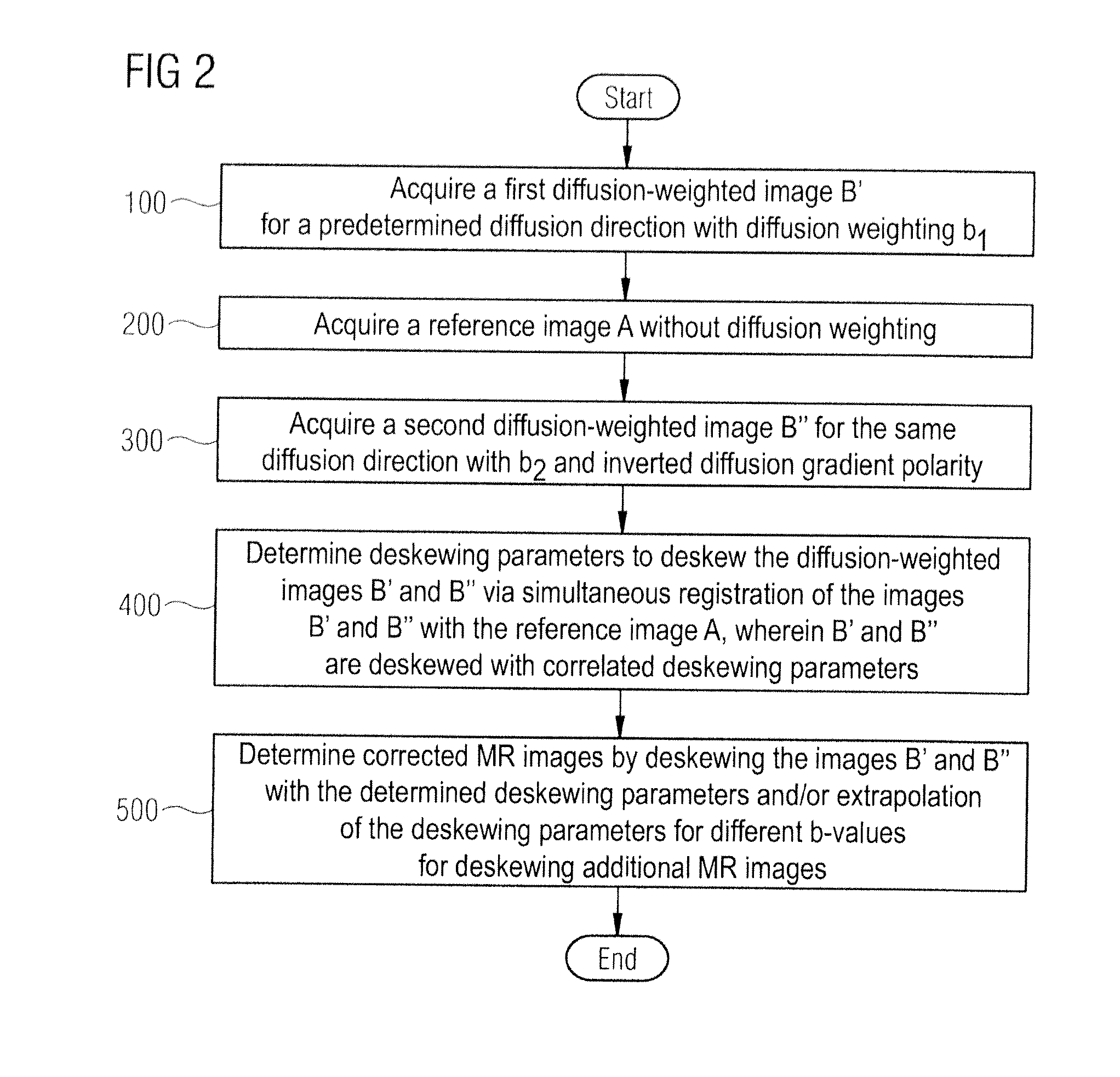Correction of distortions in diffusion-weighted magnetic resonance imaging
a diffusion-weighted magnetic resonance and imaging technology, applied in the field of image distortion correction, can solve the problems of significant challenge, dynamic distortion, acquired image data, distortion due to eddy current, etc., and achieve the effect of improving image distortion correction
- Summary
- Abstract
- Description
- Claims
- Application Information
AI Technical Summary
Benefits of technology
Problems solved by technology
Method used
Image
Examples
Embodiment Construction
[0039]FIG. 1 schematically shows a magnetic resonance system 30 which is configured to implement diffusion-weighted MR measurements, in particular to acquire diffusion-weighted images. Such a magnetic resonance system possesses a magnet 10 to generate a polarization field B0. An examination subject—here an examined person 11—can be slid on a bed table 13 into the magnet 10, as is schematically represented by the arrows. The MR system furthermore has a gradient system 14 to generate magnetic field gradients that are used for imaging and spatial coding. Furthermore, magnetic field gradients for diffusion coding (diffusion gradients) can be generated with the gradient system 15 for diffusion-weighted imaging. The strength and temporal shifting of the diffusion gradients thereby essentially determines the diffusion weighting b, in contrast to which the direction in which the gradients are shifted (diffusion gradient direction g) determines the diffusion direction that is imaged in the i...
PUM
 Login to View More
Login to View More Abstract
Description
Claims
Application Information
 Login to View More
Login to View More - R&D
- Intellectual Property
- Life Sciences
- Materials
- Tech Scout
- Unparalleled Data Quality
- Higher Quality Content
- 60% Fewer Hallucinations
Browse by: Latest US Patents, China's latest patents, Technical Efficacy Thesaurus, Application Domain, Technology Topic, Popular Technical Reports.
© 2025 PatSnap. All rights reserved.Legal|Privacy policy|Modern Slavery Act Transparency Statement|Sitemap|About US| Contact US: help@patsnap.com



